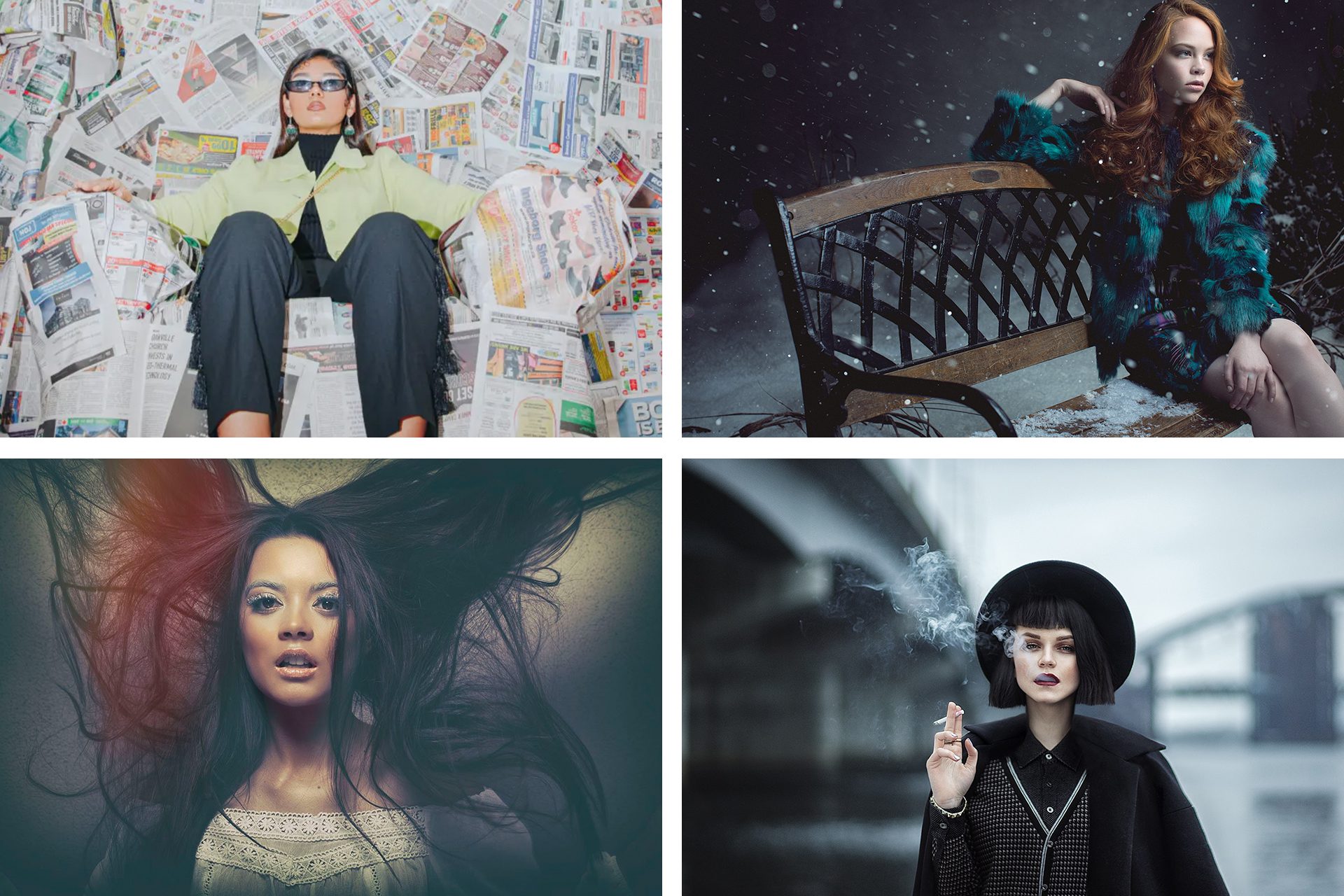In the world of stock photography, 123RF stands out as a versatile platform offering a plethora of images, including a unique category known as editorial content. Understanding what editorial content means and how it functions on 123RF is essential for anyone looking to use images in a way that adheres to legal and ethical standards. So, let's dive into what makes
What are Editorial Use Images?

When you hear the term "editorial use images," you might wonder what it precisely entails. Simply put, these are images that are intended for non-commercial use, primarily to illustrate newsworthy events or opinions. Unlike commercial images, which are crafted for promotional or advertising purposes, editorial images are all about storytelling, context, and factual representation.
- News Reporting: These images often relate to current events, social issues, or celebrity occurrences. They help readers understand the context by providing visual support to a story.
- Blogs and Articles: Writers frequently supplement their content with editorial images to make it more engaging and informative, providing a visual interpretation of what is being discussed.
- Documentaries & Videos: Videographers can use these images to add authenticity and depth to their narratives, especially when explaining real-life events.
It’s important to note that editorial images typically come with usage restrictions. For instance, they are not allowed for commercial purposes like promotions or endorsements. Thus, always ensure that you have the right license for editorial content from platforms like 123RF before using these images in your projects.
In summary, understanding and utilizing editorial use images correctly can significantly enhance the storytelling aspect of your content while respecting copyright laws and the integrity of the originals.
Also Read This: Compressing Image Size to 500KB
Differences Between Editorial and Commercial Use

When it comes to using images, it’s crucial to understand the differences between editorial and commercial use. Each category serves a distinct purpose and adheres to different guidelines, especially in platforms like 123RF.
Editorial Use refers to images that are meant for newsworthy context or for illustrating factual content. These images are typically used in:
- News articles
- Blogs that report on current events
- Magazines focusing on issues or events
- Documentaries and educational materials
- Social media posts that inform the public
On the other hand, Commercial Use involves images used for promotional purposes, including:
- Advertisements
- Marketing materials
- Corporate branding
- Packaging for products
- Websites aimed at selling products
The main differences lie in the intent and context of use. Editorial images often depict real-life situations, events, or subjects that don't promote a product or service. They come under stricter regulations regarding the use of trademarks, logos, and identifiable individuals, usually requiring a model release for commercial purposes.
In contrast, commercial images are designed to sell or market products and require broader rights for reproduction. Choosing the wrong type can lead to legal complications or financial loss, so it’s important to be clear about your intended use when selecting images.
Also Read This: How to Save Time Searching for Content on 123RF: Best Practices
How to Choose Editorial Images from 123RF
Choosing editorial images from 123RF can be a streamlined process if you know what to look for! Here’s a handy guide to make your selection easier.
1. Know Your Purpose: Start by identifying the context in which you will use the image. Is it for a blog, a news piece, or a social media post?
2. Use the Filters: 123RF offers filters specifically for editorial content. You can select options that show only those images categorized as editorial. This saves you time.
3. Pay Attention to Licensing: Be sure to check the licensing agreements to ensure the images are meant for editorial use. Look for terms like “Editorial Use Only” in the descriptions.
4. Quality Matters: Choose high-resolution images so that they maintain quality across different platforms, whether it's in print or online.
5. Telling a Story: Select images that complement your message or narrative. You want visuals that capture the essence of your content.
6. Stay Current: Browse for recent images that reflect current events or trends. This can greatly increase the relevance of your work.
By following these steps, you can ensure that the editorial images you choose from 123RF fit your project perfectly while adhering to all necessary guidelines!
Also Read This: A Designer’s Perspective on Using 123RF
Licensing and Usage Rights for Editorial Content
When it comes to editorial content, understanding licensing and usage rights is essential for anyone looking to utilize these images effectively. Editorial images are typically licensed differently from commercial images, and here’s why that matters.
1. Editorial Use Only: Images marked as editorial are generally intended for newsworthy or informative purposes. This means they can’t be used for advertising or promotional purposes. If you’re planning to include these images in a blog post, a magazine, or a news piece, you’re in good shape, but using them to endorse a product or service is a no-go.
2. Licensing Types: 123RF offers various licensing options for editorial content. These may include:
- Royalty-Free (RF): You pay once and can use the image multiple times.
- Rights-Managed (RM): You pay based on specific usage requirements, and the image can’t be used elsewhere.
3. Credit Requirements: Most platforms, including 123RF, require proper attribution for editorial images. Ensure that you give credit where it’s due, usually in the format “Image by [Photographer Name] via 123RF” in your publications.
4. Recognizing Restrictions: Be aware that some images may have restrictions based on geographic location or time limits. Always read the licensing agreement carefully before use.
Understanding these licensing nuances helps you avoid legal pitfalls while maximizing the effectiveness of your editorial content!
Also Read This: 123RF vs Shutterstock: Choosing the Best Stock Photography Platform
Common Applications of Editorial Images
Editorial images serve a variety of purposes in today's visual landscape. If you’re wondering how to effectively employ them, here are some common applications:
- News Articles: Editorial images are essential for illustrating news stories, providing context, and enhancing reader engagement. Think of those powerful shots that bring a story to life!
- Blog Posts: If you write about current events, trends, or cultural topics, editorial images can help convey your message visually, making your posts more appealing and informative.
- Social Media: Platforms like Instagram and Facebook thrive on visuals. Using editorial images can help fuel conversations around trending topics, bringing a fresh perspective to your posts.
- Documentaries and Educational Content: When producing informative pieces, editorial images can provide critical context and support the narrative effectively.
- Magazines and Journals: From fashion to sports, editorial images are used abundantly to capture moments and tell a story, making layouts more compelling.
In summary, the applications of editorial images are vast. Whether in print or digital form, they play a crucial role in how we communicate stories and engage with our audience. So, whatever your platform may be, don't hesitate to leverage these powerful visual tools!
Understanding 123RF Editorial Content and Editorial Use Images
123RF is a well-known stock media platform that offers a vast array of images, videos, and audio tracks for various purposes. Among the content types available, editorial content and editorial use images hold a distinct place. This type of content is essential for media outlets, bloggers, and marketers aiming to provide accurate, timely, and relevant information without commercial intent.
Editorial content typically includes images that depict real events, significant people, or locations that are newsworthy. These images are crucial for storytelling and information dissemination. Unlike traditional stock images, editorial content is not meant for promotional use. Below are a few key characteristics:
- Authenticity: Editorial images capture genuine moments that reflect reality.
- Newsworthy Nature: These images are often tied to specific events or current affairs.
- No Commercial Use: Editorial images cannot be used for commercial purposes, such as advertising or marketing campaigns.
When using editorial content from 123RF, it’s important to understand the licensing agreements. Here are some key considerations:
| License Type | Description |
|---|---|
| Editorial Use Only | Images can be used in news articles, blogs, and non-commercial projects. |
| Restrictions | Cannot be modified for commercial purposes or used in promotion. |
In conclusion, understanding the nuances of editorial content and editorial use images on 123RF is vital for anyone looking to leverage such assets for informative purposes without infringing on copyrights. Always ensure that your use aligns with the licensing agreements to avoid potential legal issues.
 admin
admin








